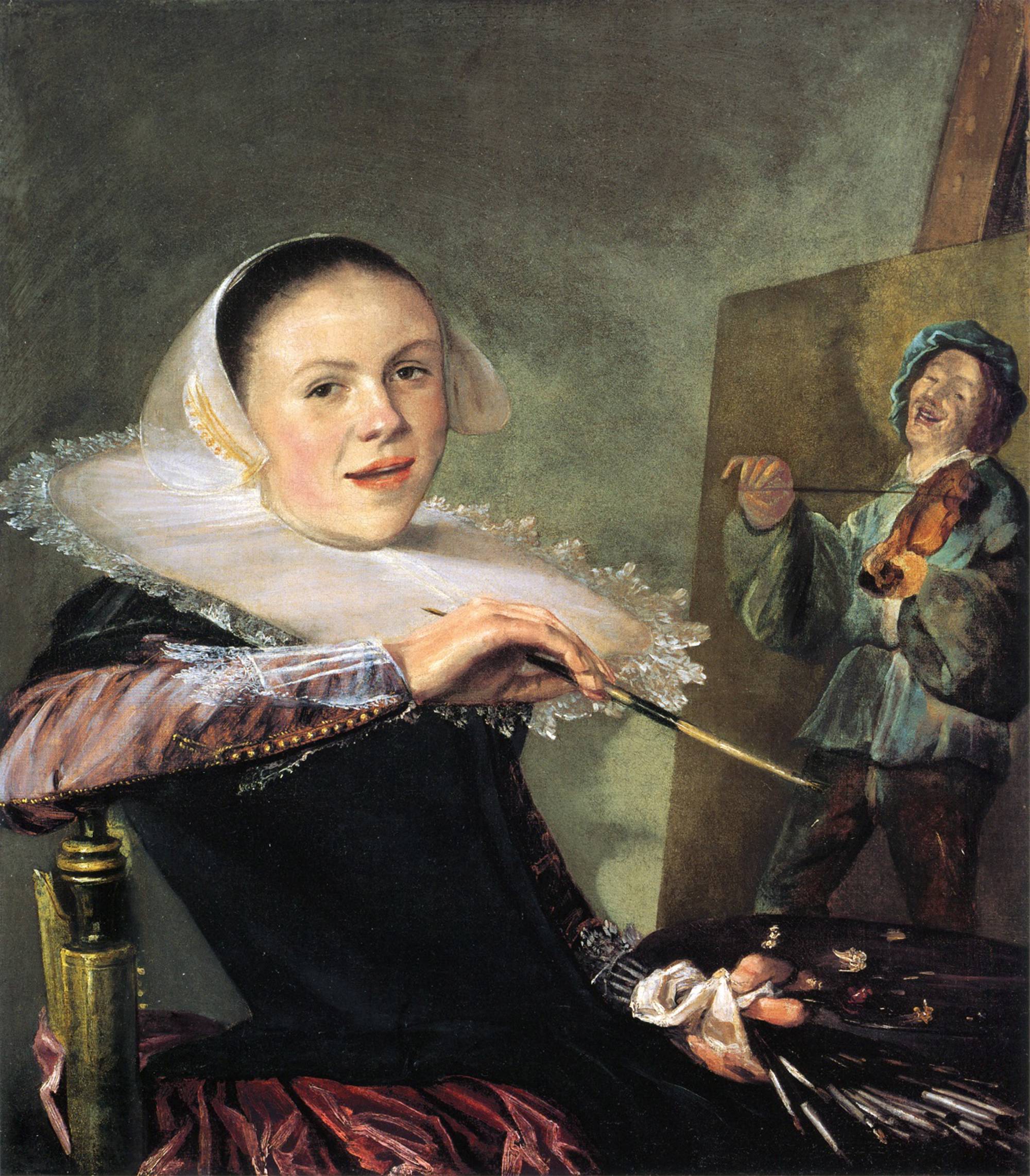Clara Peeters, a talented painter of still lifes, was one of the few female artists of the early seventeenth century. Her work is greatly admired today, yet we still know next to nothing about her life. Her name is known only because she signed a number of paintings. The obvious similarities between her still lifes and those of Antwerp specialists such as Osias Beert and Jacob van Hulsdonck suggest that Peeters worked in Antwerp. Moreover, several of the panels she used bear Antwerp maker’s marks. Even though women were allowed to join the Antwerp painters’ guild from 1602 onwards, her name does not appear on any of the surviving membership lists.
As far as we know, Peeters painted nothing but still lifes. The Still Life with Cheeses, Almonds and Pretzels is one of her finest works and is in an excellent state of preservation. The eye-catching element of the composition is a pewter plate containing three cheeses: at the front probably a ripe Edam cheese, behind it a large half-cheese, and on top of that a piece of sheep’s cheese. This pyramid of cheeses is crowned with a smaller plate of butter curls. At the front of the stone tabletop are, from left to right, two pretzels, a knife with a beautifully decorated silver handle, three almonds, and a blue-and-white Wan Li dish containing dried figs, almonds and raisins. An earthenware face jug and a partly gilt lidded glass à la façon de Venise stand further back, and at the right are a roll and two raisins.
Peeters lavished a great deal of attention on the minute rendering of details, such as small irregularities and damaged places in the objects. A detail like the ‘test hole’ in the largest cheese is telling. The side of the cheese on view shows exactly where the cheese inspector took a sample. After testing it, he stuck the rest of the piece back in, causing shreds of cheese to fall on the edge of the plate. The round indentation on the top of the cheese also records the fact that a sample was taken. The various surfaces appear almost real. This is particularly evident in the crumbly texture of the dark green cheese, the curls of butter that are truly as soft as butter, and the light reflecting in the transparent wine glass. Fortunately this attention to detail and the depiction of materials was not finicky and did not lead to stiff brushwork. On the contrary, Peeters’s loose brushstrokes testify to her virtuoso technique. The palette consists mainly of carefully chosen, balanced shades of yellow and reddish brown, which gives the painting a warm appearance, with the blue-and white plate at the front right providing a cool accent. The dark background and the tight framing of the objects within the picture plane lend the image an intimate character.
Many of the objects depicted – such as the knife in the fore ground, which extends beyond the edge of the table – occur in other still lifes by Peeters. The blade bears an Antwerp maker’s mark, while the silver handle is decorated with ornaments and figures that allude to love and marriage: above, an emblem of entwined hands and a burning heart; below, the allegorical figures of Faith and Temperance (supplied with explanatory inscriptions). Such a knife and accompanying fork were presented in a case as wedding presents. Peeters ‘signed’ this bridal knife by placing her name on the side in the form of an engraved inscription. This is one of the few still lifes that bears her full name; she usually signed only CLARA P. Even though no document has yet surfaced to prove that she was married, it is tempting to think that this knife was one of her own wedding presents.
Peeters added another personal touch to this still life, in addition to her name. If you look closely at the metal lid of the earthen ware jug, you can see a woman’s head with a white cap – the painter herself – reflected in its surface . She included similar reflected portraits in other still lifes too, like a second signature. Peeters was one of the first artists to do this. Later the ‘self-portrait in a reflection’ would become a familiar phenomenon.
Arrays of cheeses are a subgenre within the specialism of the food still life. Then, as now, the production of cheese and butter was of great economic importance to the Netherlands; these dairy products were valuable export commodities even in those days. The presence of cheese in this and similar still lifes could be a reference to prosperity and national pride, yet an abundance of these dairy products can also be seen as an allusion to the harmful effects of excess eating. A well-known Dutch saying underscored this: ‘zuivel op zuivel is ‘t werk van den duivel’ (one dairy product upon another is the work of the devil). In other words, cheese on buttered bread is too much of a good thing. There were also those who associated cheese, particularly aged cheese, with decay and even death. This notion tallies with the symbolism of transience to be found in countless seventeenth-century still lifes. The damaged edge of the stone table, so clearly visible here, may well indicate that all earthly things are doomed to perish. Apart from such deeper meanings, however, lovers of art and good food cannot fail to enjoy – as they must have done in centuries past – the delectable rendering of cheeses and other edibles which makes this still life by Clara Peeters a feast for the eyes.
(this is a reworked version of the article ‘Clara’s Cheeses’ by Edwin Buijsen, published in: Mauritshuis in focus 25 (2) 2012, pp. 14-22)














